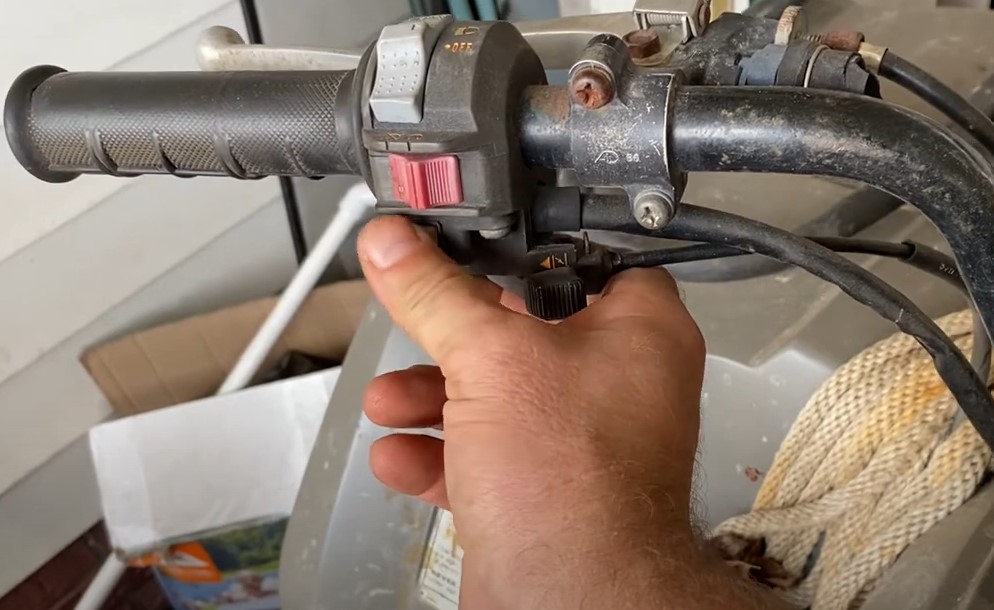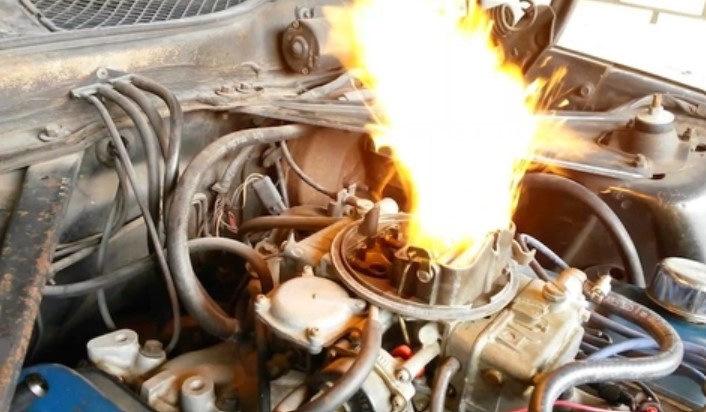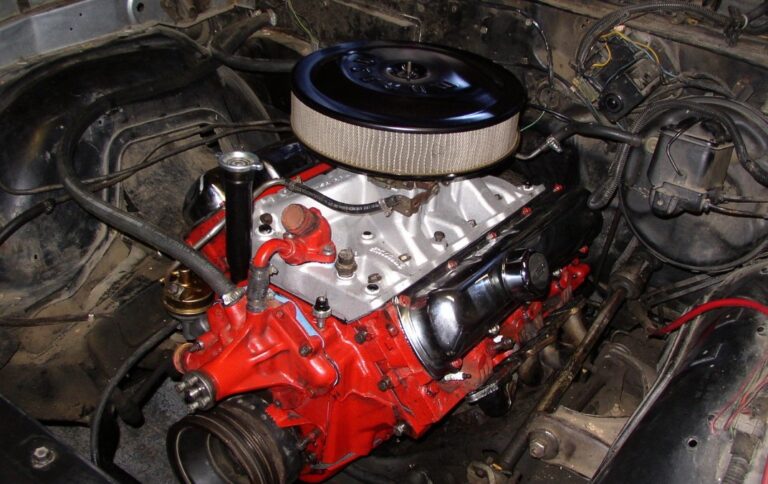How Does The Engine Stop Switch Stop The ATV’s Engine?
In this article, we’ll explain How Does The Engine Stop Switch Stop The ATV’s Engine? Understanding the functionality of an ATV’s engine stop switch is crucial for safe and efficient operation. This switch, a vital component in ATV design, plays a key role in ensuring the rider’s control over the vehicle.
In essence, the engine stop switch is designed to immediately halt the engine’s operation, providing a quick means to stop the vehicle in emergency situations. This article delves into the intricate workings of the engine stop switch, its importance, and its impact on ATV safety and performance.
Key Takeaways
- The engine stop switch interrupts the ignition system to halt the engine.
- It’s an essential safety feature in ATVs.
- Quick and easy to access, allowing for immediate engine shutdown.
- It bypasses the regular shutdown process, providing instant response.
- Understanding its operation enhances overall ATV safety.
How Does The Engine Stop Switch Stop The ATV’s Engine?
The engine stop switch in an ATV is ingeniously designed to provide an immediate response to stop the engine. When activated, this switch disrupts the electrical circuit of the ignition system.

This interruption prevents the spark plug from firing, which in turn stops the combustion process in the engine. The immediate ceasing of the engine’s operation ensures that the ATV can be quickly and safely brought to a halt.
The Electrical Interruption Process
The key to the engine stop switch’s function lies in its ability to interrupt the electrical flow. When the switch is engaged, it breaks the circuit that powers the ignition coil.
This coil is responsible for generating the high voltage necessary for the spark plug to ignite the fuel-air mixture in the engine. Without this ignition, the engine cannot continue running, effectively stopping the ATV.
Safety and Accessibility
Safety is paramount in ATV design, and the engine stop switch is a testament to this focus. Positioned within easy reach of the rider, this switch allows for rapid engine shutdown in emergencies. This accessibility is crucial for preventing accidents and ensuring quick response in unpredictable situations.
The Importance of the Engine Stop Switch in ATV Safety
The engine stop switch is not just a convenient feature; it’s a critical safety component. Its ability to instantly stop the engine can be the difference between a controlled stop and a potential accident. This switch is particularly important in scenarios where the ATV is malfunctioning or the rider has lost control.
Preventing Accidents
In situations where the ATV begins to operate erratically or the throttle becomes stuck, the engine stop switch provides a vital means of regaining control. By stopping the engine, it prevents the ATV from accelerating uncontrollably, thereby reducing the risk of accidents.
Quick Response in Emergencies
The engine stop switch’s design for quick and easy access ensures that riders can react swiftly in emergency situations. Whether it’s avoiding an obstacle or responding to a sudden mechanical issue, the ability to immediately stop the engine is invaluable.
Comparing Engine Stop Switch with Other Shutdown Methods
While the engine stop switch is a direct and immediate method to stop the ATV’s engine, other shutdown methods, like the ignition key or a kill switch, serve similar purposes but with key differences.

Ignition Key Versus Engine Stop Switch
The ignition key can also shut down the engine, but it requires a few seconds longer as it follows a shutdown sequence. This sequence involves cutting off the fuel supply and gradually stopping the engine, which is not as instantaneous as the engine stop switch.
Kill Switch and Engine Stop Switch
The kill switch, similar to the engine stop switch, is designed for emergency situations. However, its mechanism might slightly differ depending on the ATV model. Some kill switches may involve cutting off the fuel supply, which can take slightly longer to stop the engine compared to the direct electrical interruption of the engine stop switch.
Maintenance and Troubleshooting of the Engine Stop Switch
Regular maintenance and prompt troubleshooting of the engine stop switch are essential to ensure its reliability and functionality. Keeping this switch in optimal condition is key to ATV safety.
Regular Maintenance Checks
Routine checks should include inspecting the switch for any physical damage, ensuring it is clean and free from debris, and checking the electrical connections for any signs of wear or corrosion.
Troubleshooting Common Issues
If the engine stop switch is not functioning properly, it could be due to a faulty switch, loose connections, or a damaged ignition system. Troubleshooting typically involves inspecting these components and testing the switch’s continuity with a multimeter.
Integration of Engine Stop Switch in Modern ATV Design
Modern ATV designs continue to innovate in safety features, and the engine stop switch is no exception. Enhanced ergonomics and advanced materials have improved the switch’s accessibility, durability, and reliability.

Ergonomic Placement
The placement of the engine stop switch in modern ATVs is carefully considered to ensure it is easily accessible in emergency situations. Designers focus on ergonomics to ensure the switch can be activated without the rider having to remove their hand from the handlebar.
Advanced Materials and Design
The use of advanced materials has increased the durability and lifespan of the engine stop switch. Modern switches are designed to withstand harsh conditions and frequent use, ensuring consistent performance.
What Is An ATV Kill Switch?
An ATV kill switch, also known as an emergency stop switch, is a safety device designed to quickly shut off the engine in case of an emergency. It’s typically a red button located within easy reach of the rider, often on the handlebars.
When pressed, the kill switch disrupts the electrical circuit to the ignition system, stopping the engine immediately. This design is intended to provide a fast and effective way to turn off the engine, especially in situations where the rider loses control or when other normal stopping methods are not feasible.
The mechanism of the kill switch may vary slightly depending on the ATV model, but its primary function remains the same – to provide a quick means to stop the engine for safety reasons.
Why Is It So Important?
The importance of an ATV kill switch lies in its role as a critical safety feature. ATVs, known for their off-road capabilities and high speeds, can become dangerous in certain situations, such as mechanical failures, rider loss of control, or when navigating challenging terrain.

The kill switch offers a way to immediately stop the engine and prevent further movement of the ATV, thereby reducing the risk of injury or accident.
In cases where the throttle sticks open or if a rider is thrown off but still attached to the ATV via a safety tether, the kill switch can be a lifesaving feature. This immediate response is crucial in preventing potentially dangerous situations from escalating into serious accidents.
What Does The Engine Stop Switch Do?
The engine stop switch on an ATV serves a similar purpose to the kill switch but is often used in a slightly different context. This switch, also known as an engine shutdown or cut-off switch, provides a quick method to stop the engine’s operation, particularly in emergency situations.
When activated, it interrupts the electrical circuit of the ignition system, similar to the kill switch. However, the engine stop switch is often used for more general purposes, like turning off the engine quickly when stopping for a brief period or when the rider finishes using the ATV.
Its presence ensures that, regardless of the situation, the rider has a fast and effective way to stop the engine, enhancing the overall safety of the ATV operation.
What Is The Purpose Of A Kill Switch?
The purpose of a kill switch on an ATV is primarily centered around emergency safety measures. It acts as a fail-safe, ensuring that the rider can rapidly shut down the engine in critical situations where immediate action is required.

This includes scenarios like mechanical failures, where the ATV’s regular stopping mechanisms (like brakes or throttle release) fail to function properly, or in accidents where the rider might be thrown off the ATV. The kill switch is particularly vital in preventing the ATV from running uncontrollably or causing further damage or injury.
Its design and accessibility are such that it can be activated quickly and without the need to navigate complex controls, making it an essential feature for enhancing the safety of ATV riding.
Can I Use Engine Kill Switch Frequently?
Using the engine kill switch frequently as a regular method for stopping the ATV engine is generally not recommended. While it is designed for rapid engine shutdown, frequent use can potentially lead to wear and tear on the ignition system and other related electrical components.
It’s important to use the engine kill switch as intended – for quick stops and in emergency situations. For regular shutdowns, it’s better to use the standard ignition key turn-off method.
This approach follows a more controlled shutdown sequence, reducing stress on the engine and electrical systems, and helping to prolong the life of these components. However, it is also important to note that using the kill switch will not harm the engine if used occasionally or in necessary situations.
Conclusion
The engine stop switch is a fundamental component of ATV safety, providing an immediate method to halt the engine in emergencies. Its design and functionality are critical for preventing accidents and ensuring rider safety.
Understanding its operation, maintaining it properly, and appreciating its role in ATV design are key for any ATV enthusiast or professional rider. This knowledge not only enhances safety but also contributes to a more enjoyable and controlled riding experience.
Top FAQ’s
How important is the engine stop switch for ATV safety?
The engine stop switch is crucial for ATV safety. It provides a rapid means to stop the engine in emergencies, helping to prevent accidents and injuries. It’s an essential feature for maintaining control and safety during ATV operation.
What should I do if the engine stop switch doesn’t stop the engine?
If the engine doesn’t stop when using the switch, check for a faulty switch, loose connections, or issues with the ignition system. Consult a professional mechanic if you’re unable to diagnose or fix the problem.
What maintenance does the engine stop switch require?
Regular maintenance includes checking for physical damage, ensuring cleanliness, and inspecting electrical connections for wear or corrosion. Keeping the switch in good condition is vital for reliable performance.
How do I test if the engine stop switch on my ATV is working correctly?
To test the switch, start your ATV and then activate the switch. If it’s working correctly, the engine should stop immediately. You can also use a multimeter to test the switch’s continuity.

Welcome to the exhilarating world of Matt Rex, a professional car racer turned renowned vehicle enthusiast. Immerse yourself in his captivating blog as he shares heart-pounding adventures, expert reviews, and valuable insights on cars, trucks, jets, and more. Fuel your passion for speed and discover the beauty of vehicles through Matt’s engaging stories and meticulous expertise. Join the ever-growing community of enthusiasts who find inspiration and expert advice in Matt Rex’s blog—a digital hub where the thrill of speed meets the pursuit of knowledge.







